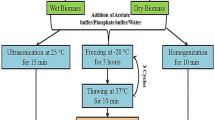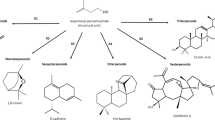Abstract
EVIDENCE has recently been presented that bloat on red clover is due primarily to the formation of stable foams due mainly to the clover cytoplasmic protein1. Even accepting this factor as an important one in the production of bloat on lucerne, variation in bloat potency of the herbage still cannot be accounted for in terms of protein differences1. Of course, extensive work in the United States on experimental bloat produced by lucerne saponins2 still has to be taken into account when bloat factors are considered.
Similar content being viewed by others
References
Reid, C. W. S., Eight Intern. Grassland Cong. Proc., Reading, 1960 (in the press).
Lindahl, I. L., et al., U.S. Dept. Agric. Tech. Bull. No. 1161 (April 1951).
Shaw, R. A., and Jackson, H. D., Arch. Biochem. Biophys., 84, 393, 405 (1959).
Walter, E. D., Van Atta, G. R., Thompson, C. R., and Maclay, W. D., J. Amer. Chem. Soc., 76, 2271 (1954).
Coulson, C. B., J. Sci. Food Agric., 9, 281 (1958); Nature, 180, 1297 (1957).
Van Atta, G. R., and Guggolz, J., J. Agric. Food Chem., 6, 849 (1958).
Author information
Authors and Affiliations
Rights and permissions
About this article
Cite this article
COULSON, C., DAVIES, T. Lucerne Saponin Fractionation and Bloat. Nature 188, 947–948 (1960). https://doi.org/10.1038/188947a0
Issue Date:
DOI: https://doi.org/10.1038/188947a0
- Springer Nature Limited





